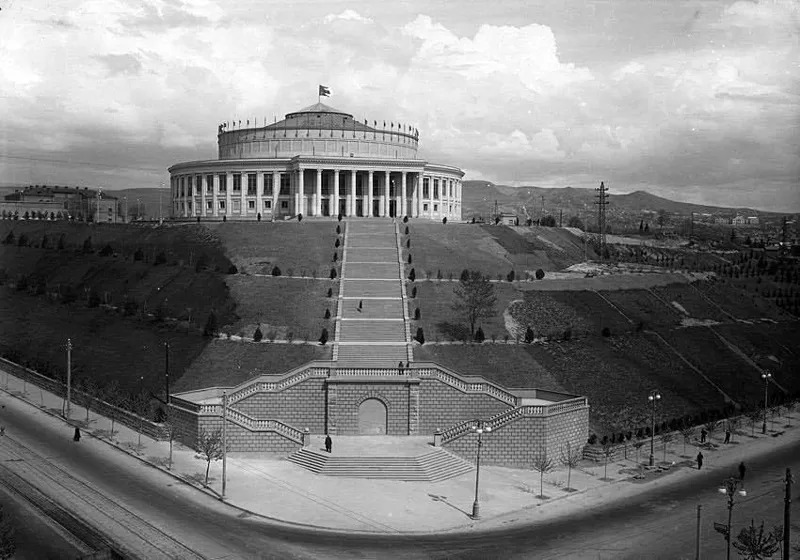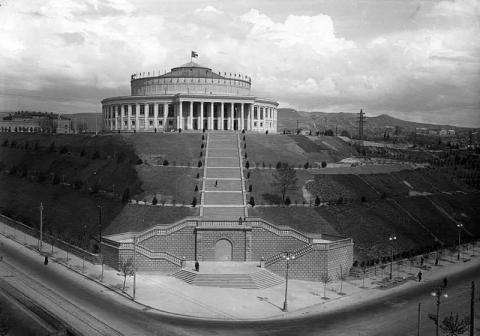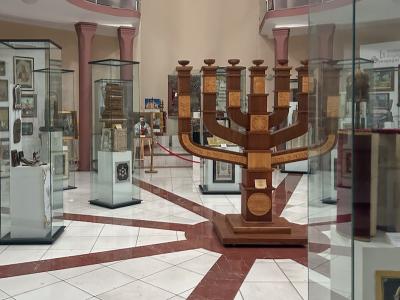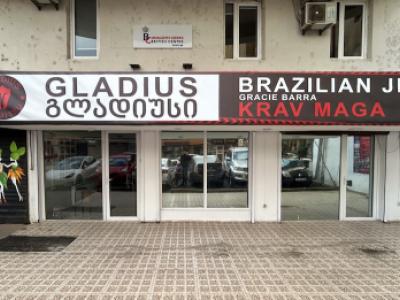Tbilisi Circus is an iconic part of the city's cultural landscape. Having lived in Georgia since 2011, I have passed by the Tbilisi Circus almost every day. However, it wasn’t until I attended a show that I truly appreciated its grandeur and rich history. I was fascinated by the performances and surprised to learn that Lavrentiy Beria, a key Soviet figure, was involved in its development.
Today on my Facebook feed appeared post in Georgian, and without hesitation I decided to translate and borrow the photo:

This article has been translated from Georgian, and the photo has been sourced from the Georgian Circus Facebook page.
The city of old Tbilisi is as unimaginable without the circus as Italy is without opera. In the 1860s to 1880s, Tbilisi residents entertained themselves not only with Verdi's music but also with circus performances by the Godfrey brothers, A. Führer, V. Sura, and others. However, the true renaissance of the Tbilisi Circus began in the 1890s when the Nikitin brothers—Dmitry, Akim, and Peter—built the first stationary circus on Golovin Avenue (now Rustaveli Avenue, 42).
In 1914, another stationary circus building was constructed on the Mtkvari River embankment at the top of Vera Rise, where a small park now stands. This circus was managed by the Efimov brothers, Efim and Mikhail. The circus became so popular in Tbilisi that almost every district had its own temporary circus. However, until the 1920s, the circus was not considered a legitimate form of art, and cultured individuals avoided attending performances openly.
In 1917, Tbilisi's circuses united, and in 1920, they were transferred from private ownership to city management. The late 1920s were pivotal for Georgian circus history, as Soviet authorities recognized the potential of circus arts not only as entertainment but also as a tool for propaganda.
The old circus building no longer met the needs of performers or audiences. The issue of constructing a new circus was raised in 1932 by Lavrentiy Beria, then the First Secretary of the Communist Party of Georgia. A competition was announced to select the best design, and a 40-meter-high hill near today's Heroes' Square was chosen as the location. The selection process went through three rounds, ultimately resulting in the adoption of a final sketch design.
Many may not know that the diameter of the circus arena in all circuses worldwide is 13.5 meters. The new Tbilisi Circus officially opened on December 19, 1939. As the press of the time noted, the first season was impressive. For many years, Tbilisi Circus was considered one of the leading circuses in the Soviet Union, with its architecture being recognized as one of the finest.
Over the decades, Tbilisi Circus has hosted numerous international performances, featuring acrobats, clowns, and animal acts that have drawn audiences from across the region. Despite challenges, including periods of decline during political and economic turmoil, the circus has remained a beloved institution. In recent years, efforts have been made to restore and modernize the facility, ensuring that it continues to captivate new generations.
Today, Tbilisi Circus stands as a blend of historical charm and contemporary entertainment, offering a variety of performances that appeal to all ages. Whether you're a first-time visitor or a longtime resident, stepping inside the grand dome of the circus is a journey through time, tradition, and talent





